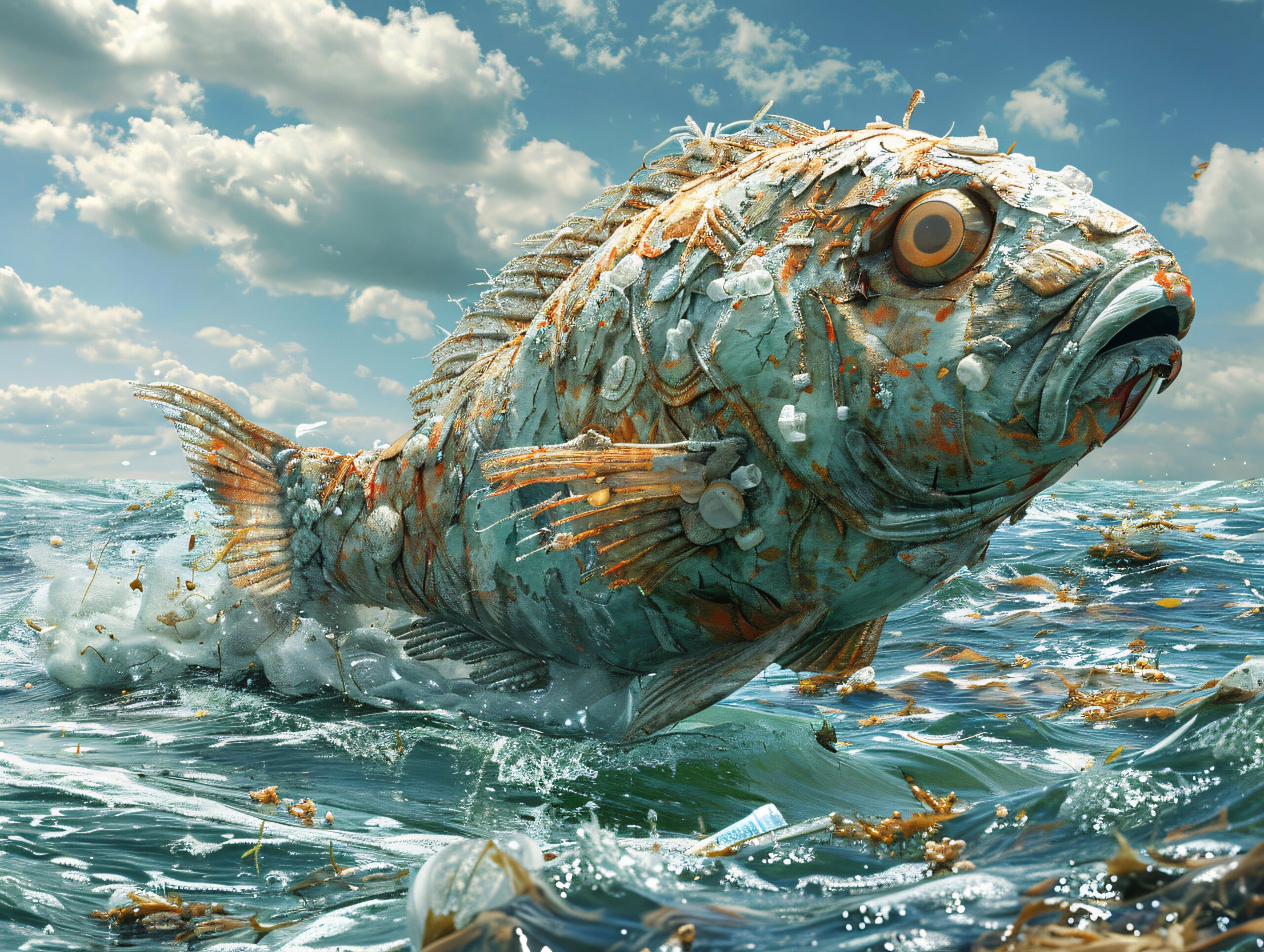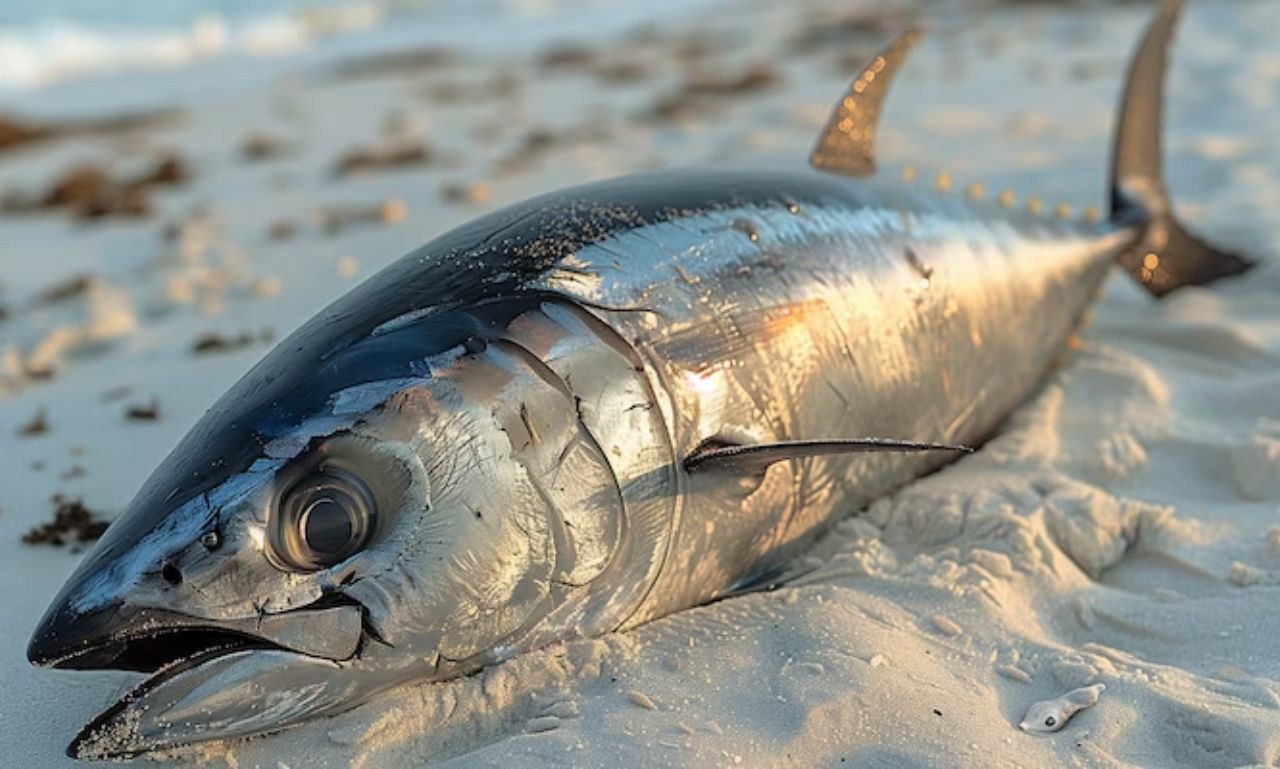The giant trevally fish (Caranx ignobilis), commonly known as GT, is one of the most iconic and revered species in tropical and subtropical oceans. Whether you are an angler, a marine biologist, or just an ocean enthusiast, the giant trevally is bound to fascinate you with its brute strength, strategic hunting tactics, and ecological importance.
In this comprehensive guide, we will dive deep into everything you need to know about this formidable predator. From its habitat and diet to its cultural significance and conservation status, here’s everything you need to understand the majestic world of the giant trevally fish.
What is the Giant Trevally Fish?
To begin with, the giant trevally is a large marine fish that belongs to the jack family, Carangidae. This species is particularly known for its incredible power and aggression, making it a top predator in coral reef environments. Furthermore, its stocky body, deeply forked tail, and silver-gray coloration make it both distinctive and visually striking.
Although it is called “giant,” this trevally is not the largest fish in the ocean. Still, its sheer presence and behavior make it one of the most formidable predators in its ecosystem.
1. Physical Characteristics of the Giant Trevally
 The giant trevally fish is instantly recognizable due to its robust and muscular frame. In fact, mature individuals can grow up to 170 centimeters (about 5.6 feet) in length and weigh over 80 kilograms (176 pounds).
The giant trevally fish is instantly recognizable due to its robust and muscular frame. In fact, mature individuals can grow up to 170 centimeters (about 5.6 feet) in length and weigh over 80 kilograms (176 pounds).
Key Features:
-
Body Shape: Oval and compressed with a steep head profile.
-
Color: Generally silver, though males may turn darker or almost black during spawning.
-
Fins: Strong dorsal and anal fins help it maneuver quickly in water.
-
Eyes: Large, aiding excellent vision during hunting.
Additionally, its strong jaws and numerous sharp teeth equip it well for tackling various types of prey, from small fish to crustaceans and even birds!
2. Natural Habitat and Distribution
Next, let’s examine where you can find the giant trevally. The species inhabits the Indo-Pacific region, ranging from the eastern coast of Africa all the way to Hawaii and Japan.
Preferred Environments:
-
Coral Reefs: Ideal hunting grounds and breeding areas.
-
Mangroves: Young GTs use mangrove systems as nurseries.
-
Open Oceans: Adults sometimes move to deeper offshore waters.
Interestingly, the giant trevally adapts to different marine environments depending on its age and size. While juveniles are often found in sheltered bays and estuaries, adults prefer more dynamic and open reef systems.
3. Feeding Habits and Hunting Strategies
Unlike many fish species, the giant trevally exhibits surprisingly complex hunting behaviors. It is both an opportunistic feeder and a strategic predator.
Diet:
-
Smaller Fish: Mullet, sardines, and reef fish are common prey.
-
Cephalopods: Squid and octopus are often targeted.
-
Crustaceans: Crabs and shrimp are also part of the diet.
-
Birds: In some rare cases, GTs have been seen leaping out of the water to catch seabirds mid-flight!
Hunting Techniques:
-
Solo Hunter: Adult GTs usually hunt alone to maximize success.
-
Cooperative Hunting: Sometimes they team up to herd fish into bait balls.
-
Ambush Tactics: They use coral structures to sneak up on prey.
Due to these varied methods, the giant trevally has earned a reputation as a master predator of the reef.
4. Reproduction and Lifecycle
Like most marine fish, the giant trevally reproduces via external fertilization. They are known to migrate to specific spawning sites, often synchronized with lunar cycles.
Spawning Behavior:
-
Seasonal Spawning: Typically occurs during warmer months.
-
Mass Aggregations: Large groups gather, increasing reproductive success.
-
Eggs: Females can release several million eggs in one spawning event.
After hatching, the larvae drift with ocean currents before settling in shallow waters. Over time, they gradually transition into deeper habitats as they grow larger.
5. Giant Trevally in Sport Fishing
Undoubtedly, one of the primary reasons for the giant trevally’s fame is its popularity among sport fishermen. Anglers from around the globe travel to tropical destinations hoping to catch one.
Why Anglers Love GT:
-
Fight Power: Known for their explosive strikes and powerful runs.
-
Challenging Catch: Requires skill, patience, and high-quality gear.
-
Catch-and-Release: Often practiced to preserve populations.
Some of the best locations to fish for GT include the Seychelles, Maldives, Australia’s Great Barrier Reef, and Hawaii.
However, due to increasing fishing pressure, many conservationists now advocate for stricter catch-and-release practices to ensure sustainability.
6. Role in the Ecosystem
The giant trevally is not just a trophy fish. It plays a vital ecological role as a top-level predator.
Ecological Importance:
-
Regulates Prey Populations: Prevents overpopulation of smaller fish.
-
Controls Invasive Species: Helps maintain the balance of the reef ecosystem.
-
Indicator Species: Its presence reflects the overall health of marine habitats.
Moreover, their absence or decline could lead to serious imbalances in the reef food web, affecting coral health and biodiversity.
7. Threats and Conservation Status
Despite their resilience, giant trevally populations are not immune to threats. Overfishing, habitat destruction, and climate change are putting pressure on their numbers.
Major Threats:
-
Commercial Fishing: GTs are sometimes caught as bycatch or targeted for their meat.
-
Recreational Overfishing: Unregulated tourism in fishing hotspots can deplete local populations.
-
Habitat Loss: Coral bleaching and mangrove deforestation reduce their natural habitats.
-
Pollution: Marine debris and toxins affect their prey and breeding grounds.
As of now, the giant trevally is not listed as endangered, but local populations may be in decline. Therefore, sustainable fishing practices and marine conservation efforts are crucial.
8. Cultural and Historical Significance
Beyond science and sport, the giant trevally has a place in local folklore and traditions, especially in the Pacific Islands.
Hawaiian Culture:
-
Known as “Ulua,” the GT features in native stories as a symbol of strength and mystery.
-
It was historically fished using traditional wooden canoes and bone hooks.
In Art and Media:
-
Documentaries like BBC’s Blue Planet II showcased the GT’s remarkable hunting behavior.
-
The fish is often painted, photographed, and celebrated in various artistic expressions.
Such cultural ties underline the deep connection between humans and the ocean, reminding us of the need to respect and protect marine life.
9. Scientific Research and Discoveries
Giant trevally continue to fascinate scientists due to their intelligence, adaptability, and ecological role. Several studies have unveiled intriguing insights into their behavior.
Recent Discoveries:
-
Tool Use in Hunting: Evidence suggests that GTs can learn to use terrain strategically to trap prey.
-
Learning Capabilities: Some researchers believe GTs can remember and adapt based on fishing pressure.
-
Tracking Studies: Satellite tagging has revealed long-distance migrations and seasonal behavior changes.
These findings emphasize that the GT is far more than a brute force predator—it’s a smart and complex creature.
10. Tips for Responsible Interaction
Finally, whether you’re an angler, diver, or marine tourist, it’s essential to interact responsibly with the giant trevally and its environment.
Best Practices:
-
Catch and Release: Use barbless hooks and handle the fish gently.
-
Avoid Overcrowding: In tourism-heavy regions, support eco-certified operations.
-
Respect Habitats: Don’t disturb coral reefs or mangrove areas.
-
Support Conservation: Donate to or volunteer with marine NGOs.
By adopting these behaviors, we can ensure that future generations will also get to witness the awe-inspiring power of the giant trevally.
Conclusion:
Why the Giant Trevally Fish Deserves Our Respect
In conclusion, the giant trevally fish is much more than just a big fish with a bad attitude. It represents the beauty, complexity, and fragility of the marine world. From its powerful build and intricate hunting techniques to its cultural symbolism and ecological importance, the GT truly stands as a guardian of the reef.
As human activities continue to impact the ocean, it becomes more important than ever to understand, respect, and protect magnificent creatures like the giant trevally. Whether you admire it from a boat, a reef, or a documentary screen, remember that every GT has a story, a purpose, and a home worth fighting for.












